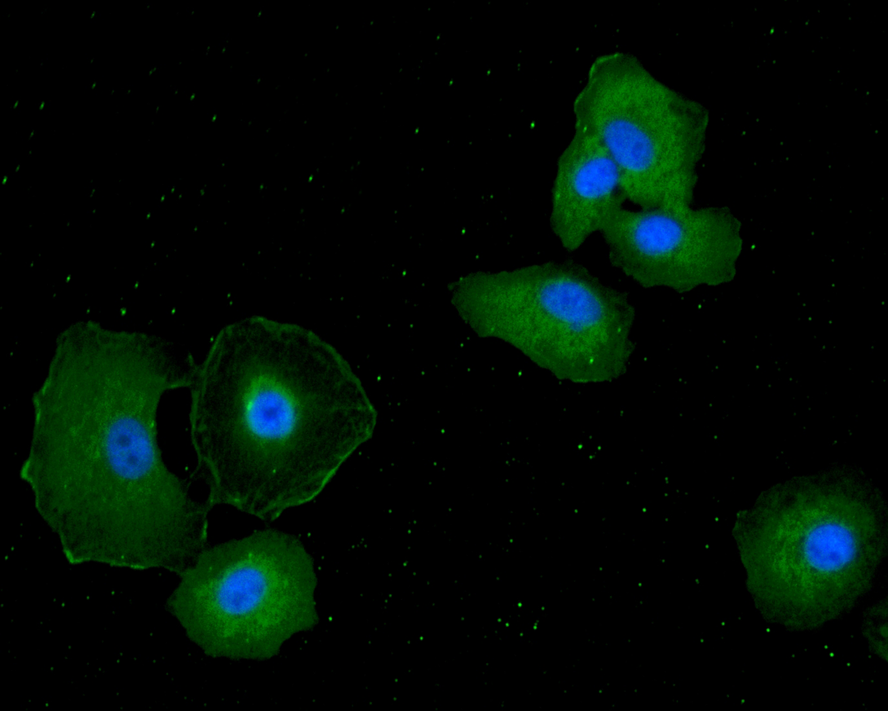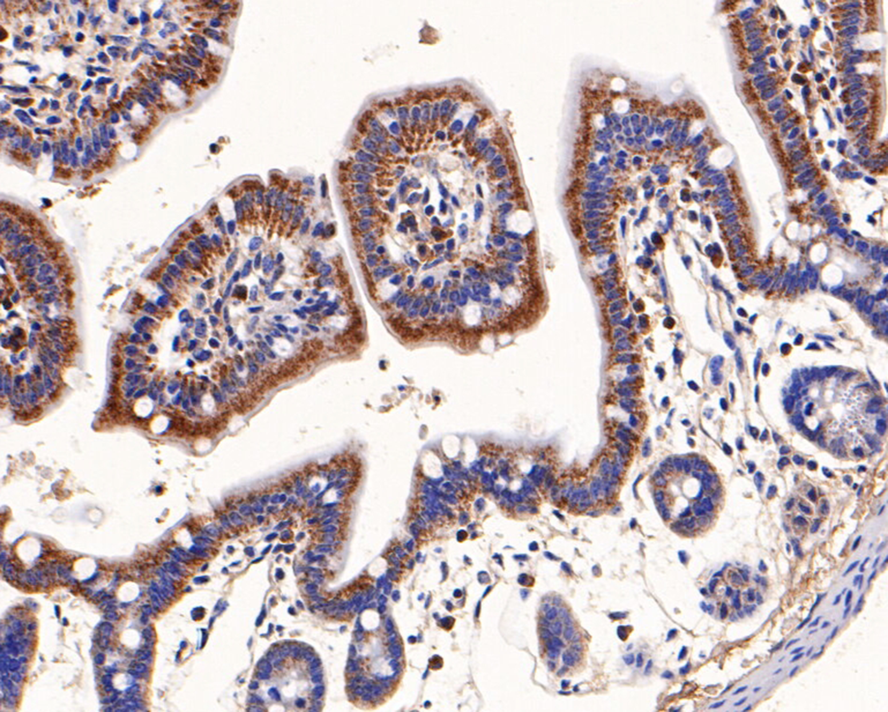NaV1.7 Rabbit Polyclonal Antibody

cat.: ER1706-44
| Product Type: | Rabbit polyclonal IgG, primary antibodies |
|---|---|
| Species reactivity: | Human |
| Applications: | IF-Cell, IHC-P, FC |
| Clonality: | Polyclonal |
| Form: | Liquid |
| Storage condition: | Store at +4℃ after thawing. Aliquot store at -20℃ or -80℃. Avoid repeated freeze / thaw cycles. |
| Storage buffer: | 1*PBS (pH7.4), 0.2% BSA, 50% Glycerol. Preservative: 0.05% Sodium Azide. |
| Concentration: | 1ug/ul |
| Purification: | Immunogen affinity purified. |
| Molecular weight: | Predicted band size: 226 kDa |
| Isotype: | IgG |
| Immunogen: | Synthetic peptide within Human NaV17 aa 1-50 / 1,988. |
| Positive control: | A549, Hela, HepG2, SH-SY5Y, human liver cancer tissue, mouse colon tissue. |
| Subcellular location: | Cell membrane. Cell projection. |
| Recommended Dilutions:
IHC-P IF-Cell FC |
1:50-1:1,000 1:50-1:500 1:50-1:100 |
| Uniprot #: | SwissProt: Q15858 Human |
| Alternative names: | ETHA GEFSP7 hNE Na hNE-Na hNENa NE NA NENA Neuroendocrine sodium channel Peripheral sodium channel 1 PN1 Scn9a SCN9A_HUMAN Sodium channel protein type 9 subunit alpha Sodium channel protein type IX subunit alpha Sodium channel voltage gated type IX alpha Sodium channel voltage gated type IX alpha polypeptide Sodium channel voltage gated type IX alpha subunit Voltage gated sodium channel alpha subunit Nav1.7 Voltage gated sodium channel subunit alpha Nav1 Voltage-gated sodium channel subunit alpha Nav1.7 |
Images

|
Fig1:
Immunocytochemistry analysis of A549 cells labeling NaV1.7 with Rabbit anti-NaV1.7 antibody (ER1706-44) at 1/500 dilution. Cells were fixed in 4% paraformaldehyde for 10 minutes at 37 ℃, permeabilized with 0.05% Triton X-100 in PBS for 20 minutes, and then blocked with 2% negative goat serum for 30 minutes at room temperature. Cells were then incubated with Rabbit anti-NaV1.7 antibody (ER1706-44) at 1/500 dilution in 2% negative goat serum overnight at 4 ℃. Goat Anti-Rabbit IgG H&L (iFluor™ 488, HA1121) was used as the secondary antibody at 1/1,000 dilution. PBS instead of the primary antibody was used as the secondary antibody only control. Nuclear DNA was labelled in blue with DAPI. |

|
Fig2:
Immunocytochemistry analysis of HepG2 cells labeling NaV1.7 with Rabbit anti-NaV1.7 antibody (ER1706-44) at 1/500 dilution. Cells were fixed in 4% paraformaldehyde for 10 minutes at 37 ℃, permeabilized with 0.05% Triton X-100 in PBS for 20 minutes, and then blocked with 2% negative goat serum for 30 minutes at room temperature. Cells were then incubated with Rabbit anti-NaV1.7 antibody (ER1706-44) at 1/500 dilution in 2% negative goat serum overnight at 4 ℃. Goat Anti-Rabbit IgG H&L (iFluor™ 488, HA1121) was used as the secondary antibody at 1/1,000 dilution. PBS instead of the primary antibody was used as the secondary antibody only control. Nuclear DNA was labelled in blue with DAPI. |

|
Fig3: ICC staining NaV1.7 in Hela cells (green). The nuclear counter stain is DAPI (blue). Cells were fixed in paraformaldehyde, permeabilised with 0.25% Triton X100/PBS. |

|
Fig4: ICC staining NaV1.7 in SH-SY5Y cells (green). The nuclear counter stain is DAPI (blue). Cells were fixed in paraformaldehyde, permeabilised with 0.25% Triton X100/PBS. |

|
Fig5: Immunohistochemical analysis of paraffin-embedded human liver cancer tissue using anti-NaV1.7 beta antibody. Counter stained with hematoxylin. |

|
Fig6: Immunohistochemical analysis of paraffin-embedded mouse colon tissue using anti-NaV1.7 beta antibody. Counter stained with hematoxylin. |

|
Fig7: Flow cytometric analysis of SH-SY5Y cells with NaV1.7 antibody at 1/100 dilution (red) compared with an unlabelled control (cells without incubation with primary antibody; black). |
Note: All products are “FOR RESEARCH USE ONLY AND ARE NOT INTENDED FOR DIAGNOSTIC OR THERAPEUTIC USE”.